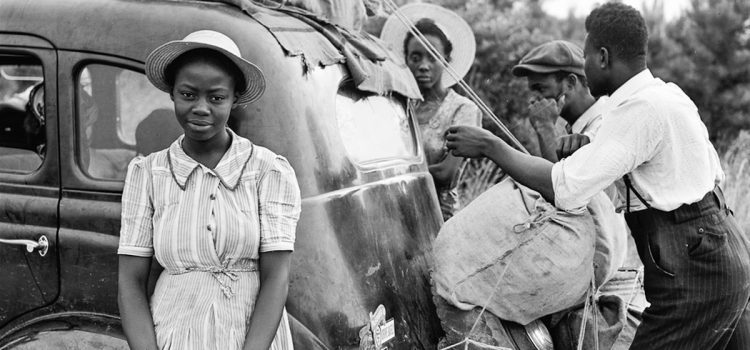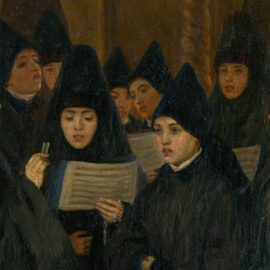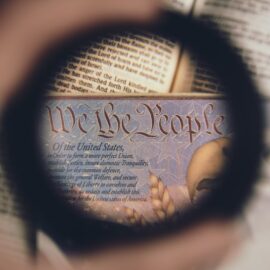

This article is an excerpt from the Shortform book guide to "Blackout" by Candace Owens. Shortform has the world's best summaries and analyses of books you should be reading.
Like this article? Sign up for a free trial here.
How did the KKK start? What were Jim Crow laws? Did the New Deal benefit Black Americans?
Candace Owens’s primary argument in Blackout is that, for Blacks to thrive in America, they must leave the Democratic Party. But, how and why did the majority of Blacks become Democrats in the first place? Owens takes us through the history of Black oppression in America.
Read more to learn the history of Black Americans and how they continued to be used even after slavery was abolished.
Reconstruction and the KKK
This history of Black Americans begins after the abolition of slavery in 1865. At this point, they faced two new forms of oppression: segregation and violence. According to Owens, both of these were at the hands of Democrats. She argues that because Democrats couldn’t legally enslave Black people anymore, they did their best to politically and socially enslave them through the use of Jim Crow laws and violence from terrorist groups.
Although they weren’t given the Constitutional right to vote until 1870, many former (male) slaves were allowed to vote by their states earlier than this, and the vast majority pledged their allegiance to the Republican Party out of loyalty to their emancipator, Abraham Lincoln. At the time, Lincoln’s vice president, Andrew Johnson (a Democrat), had assumed the presidency and wasn’t doing much to further the rights of newly freed slaves. In response, Black voters contributed in large part to the 1868 election of Republican President Ulysses S. Grant. Grant ushered in the era of Reconstruction (1865-1877)—a time period in which former slaves were given additional rights and new relationships were defined between whites and Blacks.
As Owens explains, various groups of Southern Democrats were still angry about losing the Civil War and their free labor, and they rebelled against Reconstructionist policies—often violently. The most notorious of these rebellions was the formation of the Ku Klux Klan (KKK), a secretive and violent hate group that was composed of white Southern Democrats. This terrorist group went on to lynch over 3,000 Black Republicans and over 1,200 white Republicans.
| The Rise and Fall of the KKK The Ku Klux Klan was founded during Reconstruction in 1865 in resistance to the abolition of slavery. By 1870, the Klan had factions in almost every Southern state. While the vast majority of Southerners opposed abolition because they benefited financially from slavery, the KKK believed in total white supremacy. In their hatred, they were willing to commit targeted lynchings, bombings, and burnings. Owens doesn’t specify when the lynchings reached the numbers that she cites, but a recent report states that at least 2,000 known lynchings of Black Americans took place during Reconstruction alone, and that between 1865 and 1950, the lynchings approached 6,500. During Reconstruction, local governments were either unwilling or unable to stop the KKK, so the federal (Republican) government took action. They passed the Force Bill in 1871, which gave federal courts the power to prosecute the Klan. Though it didn’t result in many arrests, the violence subsided almost entirely by 1876. The KKK’s membership had a resurgence during Prohibition and peaked in the 1920s, with over 4 million Klansmen nationwide. At this time, their target was not Black Americans, but Catholic immigrants. Because of the secrecy of the organization, it’s difficult to know precisely how many Klansmen exist today, but in 2016, experts estimated that membership was between 3,000 and 6,000. |
Segregation
In addition to the risk of lynching, Blacks endured segregation due to local regulations that became known as “Jim Crow laws.” Beginning in the late 1870s, the South enacted local and state policies designed to suppress the Black vote and keep them segregated from whites in almost all facets of life. Schools, hospitals, workplaces, transportation—even public restrooms and drinking fountains—all had separate spaces for each race. And not only were Blacks kept separate from whites, but their facilities were also of lower quality. Owens argues that these were Democratic policies designed to keep Blacks “enslaved” while a Republican federal government worked to increase their freedoms.
(Shortform note: Desegregation was a process that spanned more than 20 years. In 1948, President Truman (Democrat) ended segregation in the military. Six years later, segregation was ruled unconstitutional in the Supreme Court Case Brown vs. Board of Education. Though it was outlawed, segregation did continue in many Southern schools for more than a decade afterward, and the federal government had to step in to enforce integration. In 1961, some bus terminals began to desegregate. And in 1964, Democratic President Lyndon B. Johnson signed the Civil Rights Act, which outlawed racial discrimination in voting, employment, and in the use of public facilities.)
A New Democratic Allegiance
Following abolition, former slaves were firmly rooted in the Republican Party. But today, 87% of Black voters are registered Democrats. Owens argues that, even before the Civil Rights Act cemented their loyalty, Democrats bought Black Americans’ votes with the New Deal.
FDR and the New Deal
In 1933, during the midst of the Great Depression, newly elected President Franklin Delano Roosevelt (FDR) made a promise that persuaded Black voters to go Democrat—he promised financial stability for all Americans who were willing to work. Owens says that Black voters had nothing to lose, as nearly everyone in America was struggling financially and looking for any kind of relief. It worked, and FDR was re-elected for three more terms. His “New Deal” that followed was a series of programs and agencies aimed at restoring financial stability to the country, part of which was establishing a minimum wage.
(Shortform note: The 1936 election between FDR and Republican candidate Alf Landon was a landslide victory, in no small part to the 71% of Black voters who decided to vote Democrat. His New Deal was seen as an early success: Between FDR’s first election in 1932 and his re-election in 1936, unemployment rates as a whole dropped from 24.9% to 16.9%.)
Owens explains that the enactment of a minimum wage counterintuitively hurt Black employment. The National Recovery Administration (NRA) enacted several policies, including a minimum wage, that effectively barred Black workers from employment. For example, power was given to unions that arbitrarily refused Black workers, and skill mandates for minimum wages kept Black workers from being hired even by companies who were willing to have them.
(Shortform note: Owens doesn’t mention the NRA’s institution of a separate and lower wage scale for Black workers. Discussed in a 1933 editorial, the minimum wage was set at $13.50 per week. The NRA approved a $9 a week minimum wage for “colored workers.” They argued that this was an equitable adjustment because the cost of living for Black Americans was lower than that of their white counterparts. Whether a wage scale is more or less discriminatory than the prohibitive minimum wage is up for debate.)
To help boost the economy through inflation, FDR enacted the Agricultural Adjustment Act, which paid subsidies to farmers in exchange for limiting production of certain crops. The idea was to avoid overproduction so that crop prices could rise, which would be good for farmers. Owens says that this was another Democratic policy that helped white Americans while hurting Black Americans. The farms were owned by white people, who benefited financially from this arrangement. The workers were often Black people, who were laid off in mass numbers because of the decline in production. (Shortform note: In 1934 and 1935 alone, over 100,000 Black sharecroppers and tenant farmers were laid off from agricultural work.)
Owens says that, because of these New Deal programs and others, 1930 was the final year that Black Americans had lower unemployment rates than white Americans. (Shortform note: In 2022, Blacks had the highest unemployment rate among the racial demographics, at 5.7%. For comparison, whites were at 3%, Asians were at 2.4%, and Hispanics were at 4.1%.)
Even though the New Deal caused Black Americans to be worse off than before, they continued to re-elect FDR. Owens says that a big reason for this was FDR’s wife, Eleanor Roosevelt. Eleanor had become the face of the Democratic Party and was genuinely concerned about Black rights. For example, she pushed for anti-lynching legislation (a bill that FDR ultimately failed to support) and was instrumental in forming the black cabinet, a group of Black Americans who advised the administration on issues that affected their community. Owens says that Black voters perceived the administration to be pro-Black, even though FDR actively protected discriminatory policies in fear of losing his white Southern constituents. Owens argues that this was the Democrats’ first major manipulation of the Black vote.
(Shortform note: Owens implies that during FDR’s presidency, Black constituents blindly followed a red herring. But according to letters that were sent by the thousands to FDR during the Great Depression, Black Americans were aware of discrimination in the distribution of relief supplies. They called on FDR and Eleanor to ensure that they would be treated humanely and would receive their fair share.)

———End of Preview———
Like what you just read? Read the rest of the world's best book summary and analysis of Candace Owens's "Blackout" at Shortform.
Here's what you'll find in our full Blackout summary:
- How the Democratic Party has been keeping Blacks poor and needy for political gain
- How Democratic policies have destroyed the nuclear family
- Why Black Democrats should jump ship and join the Republicans






